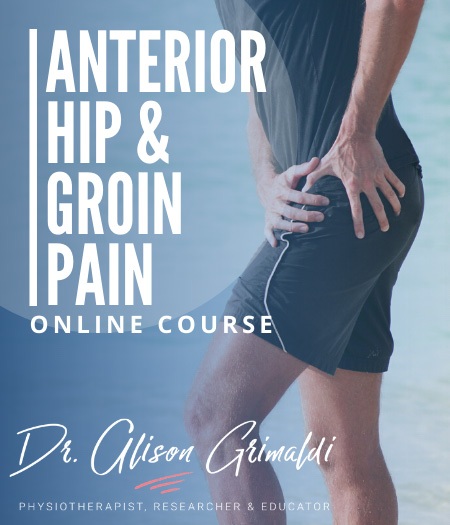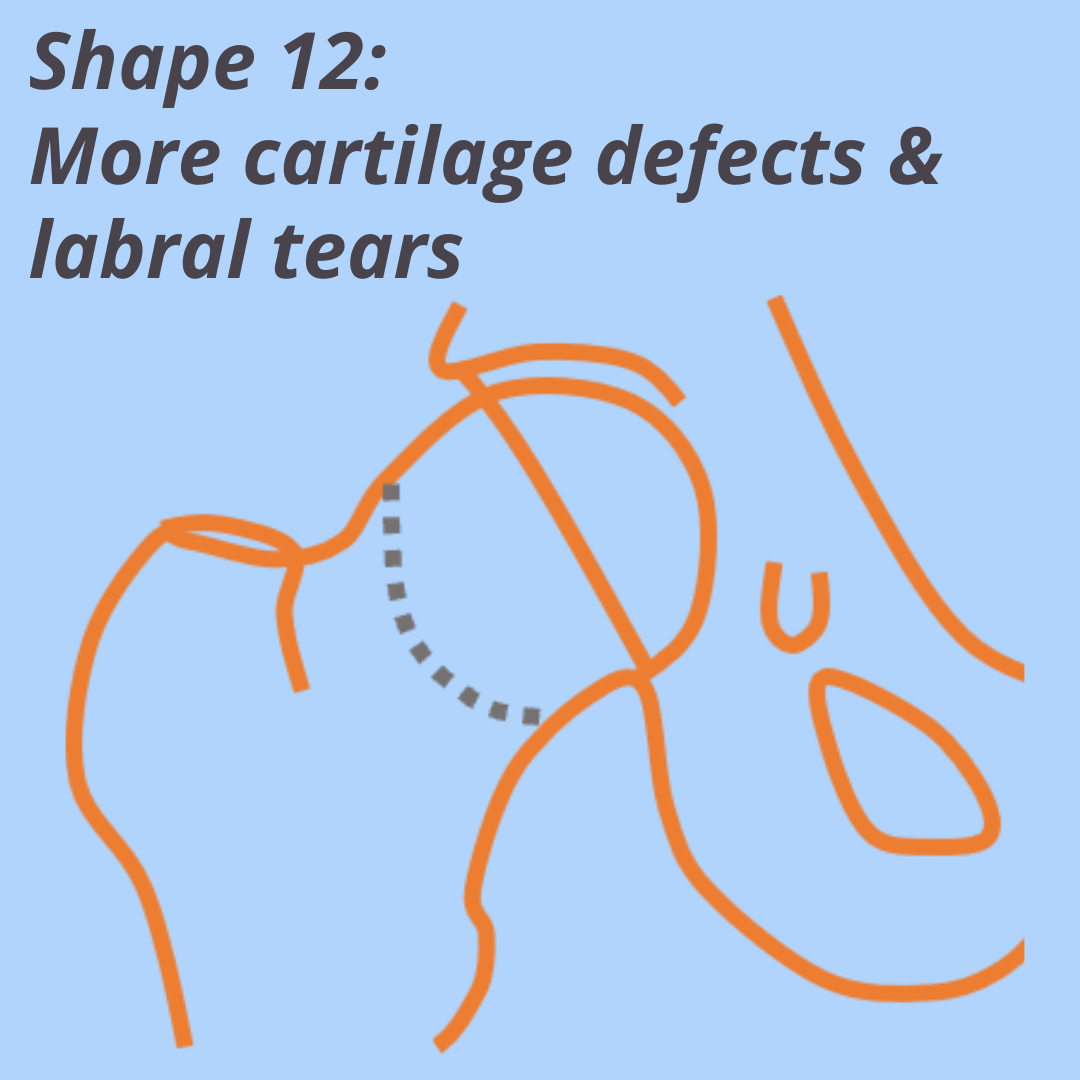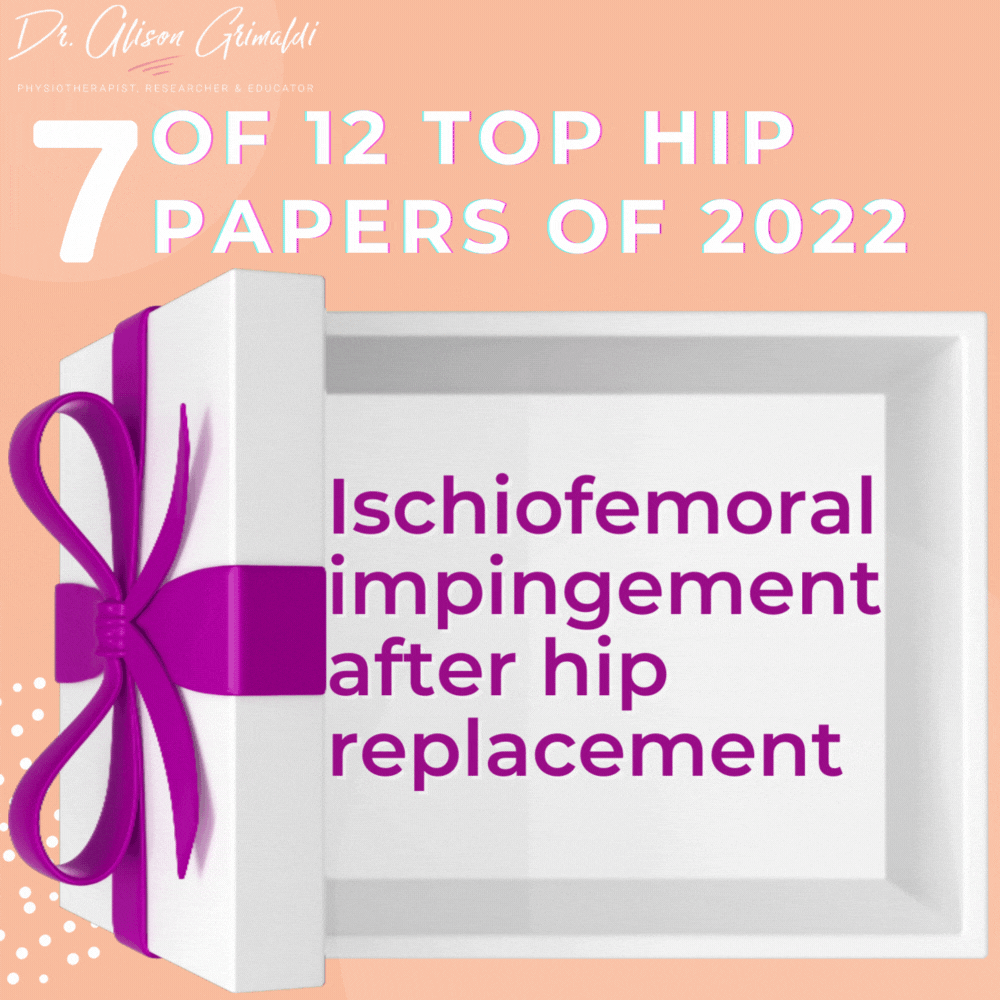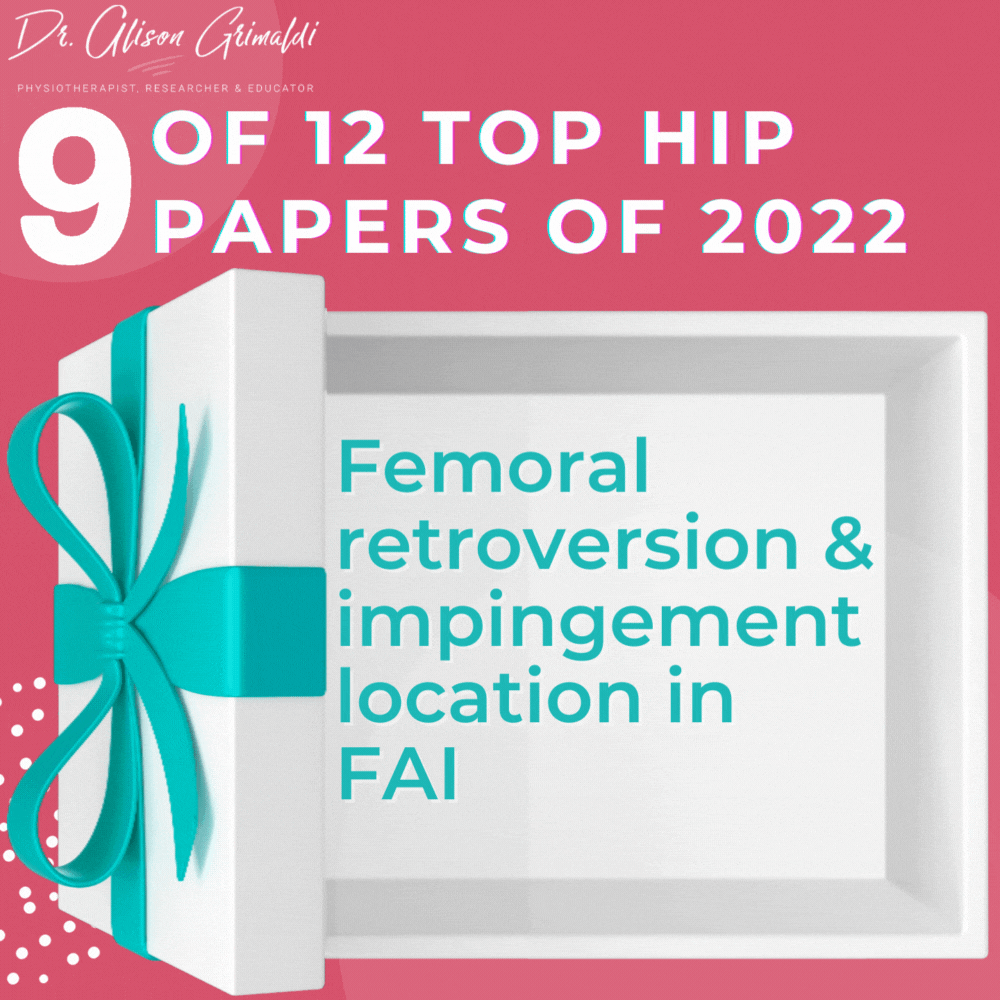8 of 12 Top Hip Papers of 2022 | Bone shape and hip osteoarthritis

Welcome back to my 12 Top Hip Papers series of miniblogs from 2022, where I walk you through what has been happening in the hip world over 2022. We are already at Day 8! If you missed day 7, you'll find a link at the bottom of this page to take you back. For day 8 we'll be taking a look at a paper that investigated the association between statistical shape modeling-defined hip bone shape and hip osteoarthritis features on imaging. Does bone shape matter? Read on to find out more.
Discover our Anterior Hip & Groin Pain Course
If you enjoyed this blog, you might like to take the online course on Anterior Hip & Groin Pain - 5 hours of guided online video content. Better your skills and understanding of the anterior hip and groin and become equipped with the knowledge to administer clinical diagnostic tests and management strategies.

8 of 12 Top Hip Papers of 2022: The association between statistical shape modeling-defined hip morphology and features of early hip osteoarthritis
Over time, researchers are revealing more and more about the relationships between bone shape and hip osteoarthritis. Understanding more about risk factors for hip OA may help us to develop better strategies to reduce risk of developing osteoarthritis, and assist us in providing specific load management advice to our patients. This new study assessed the relationship of bone shape and early cartilage and labral pathology in male and female football players.
Study Aim:
To explore the relationship between radiographic hip shape and features of early hip osteoarthritis on magnetic resonance imaging (MRI) in young male and female football players without radiographic hip osteoarthritis.
What was done:
The novel feature of this study was the use of Statistical Shape Modeling that models the shape of the whole hip, rather than focusing on a single feature like alpha angle. Bone shape was correlated with cartilage and labral pathology diagnosed on MRI.
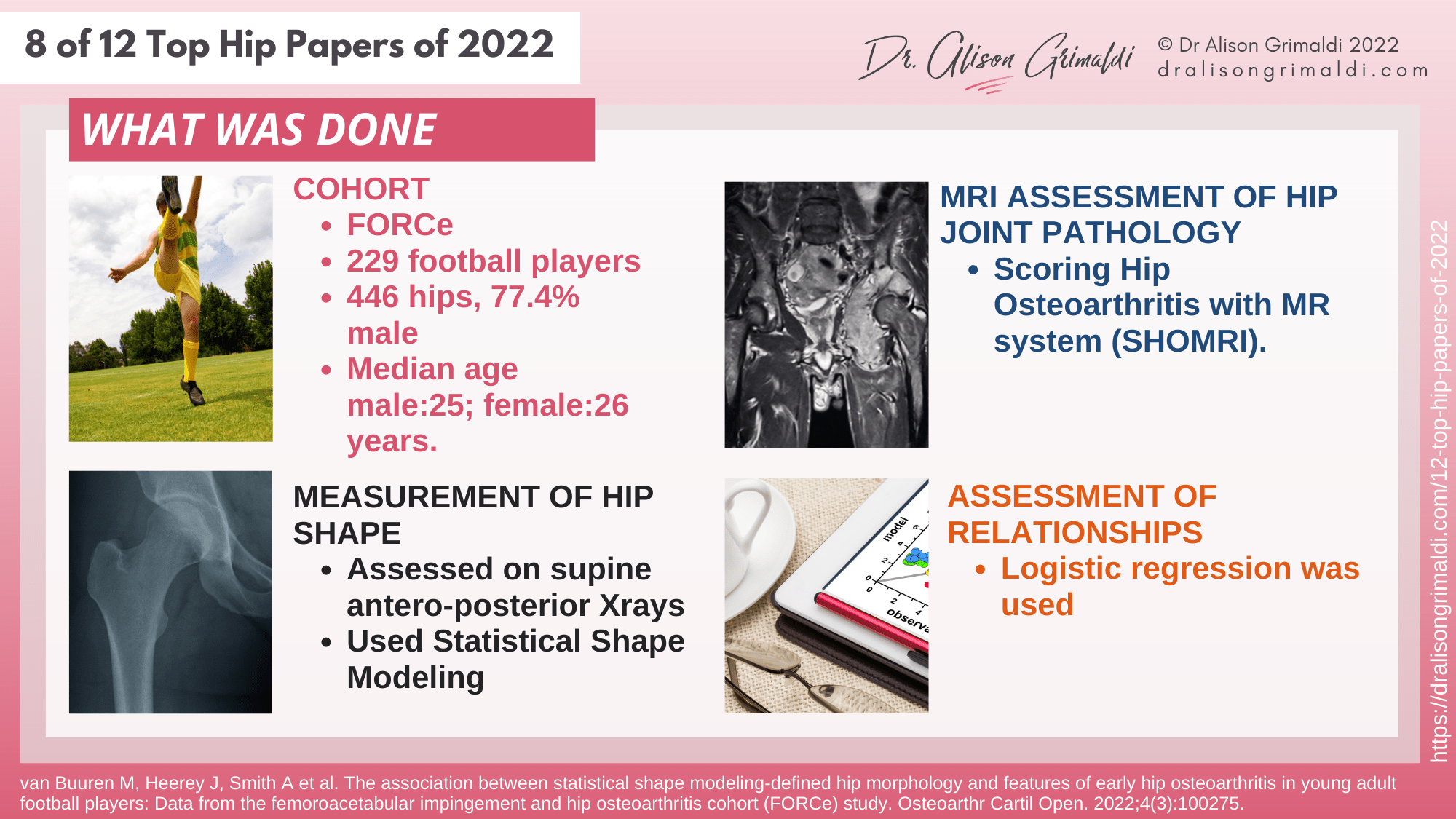
The points below outline exactly what was done in the study:
Cohort
- Femoroacetabular impingement and hip osteoarthritis cohort (FORCe)
- 229 football players
- 446 hips, 77.4% male
- Median age male:25; female:26 years.
Measurement of Hip Shape
- Assessed on supine anteroposterior Xrays.
- Statistical Shape Modeling was used to quantify the total hip shape and identify variants, rather than measuring a single element.
MRI Assessment of Hip Joint Pathology
- Cartilage defects & labral tears were graded using the Scoring Hip Osteoarthritis with MR system (SHOMRI).
Assessment of Relationships between Bone Shape and Hip Osteoarthritis
- Logistic regression was used to identify relationships between hip shape variant and presence of cartilage defects or labral tears - features of early hip osteoarthritis.
Key Findings:
It was found that 3 bone shapes were associated with early cartilage and/or labral pathology in males, with no association found in females.

Shape 1: More cartilage defects
Shape features:
- short neck + low femoral offset
- prominent trochanters
- higher neck-shaft angle (genu valgum)
- posterior pelvic tilt
Shape 12: More cartilage defects & labral tears
Shape features:
- cam morphology
- less prominent greater trochanter
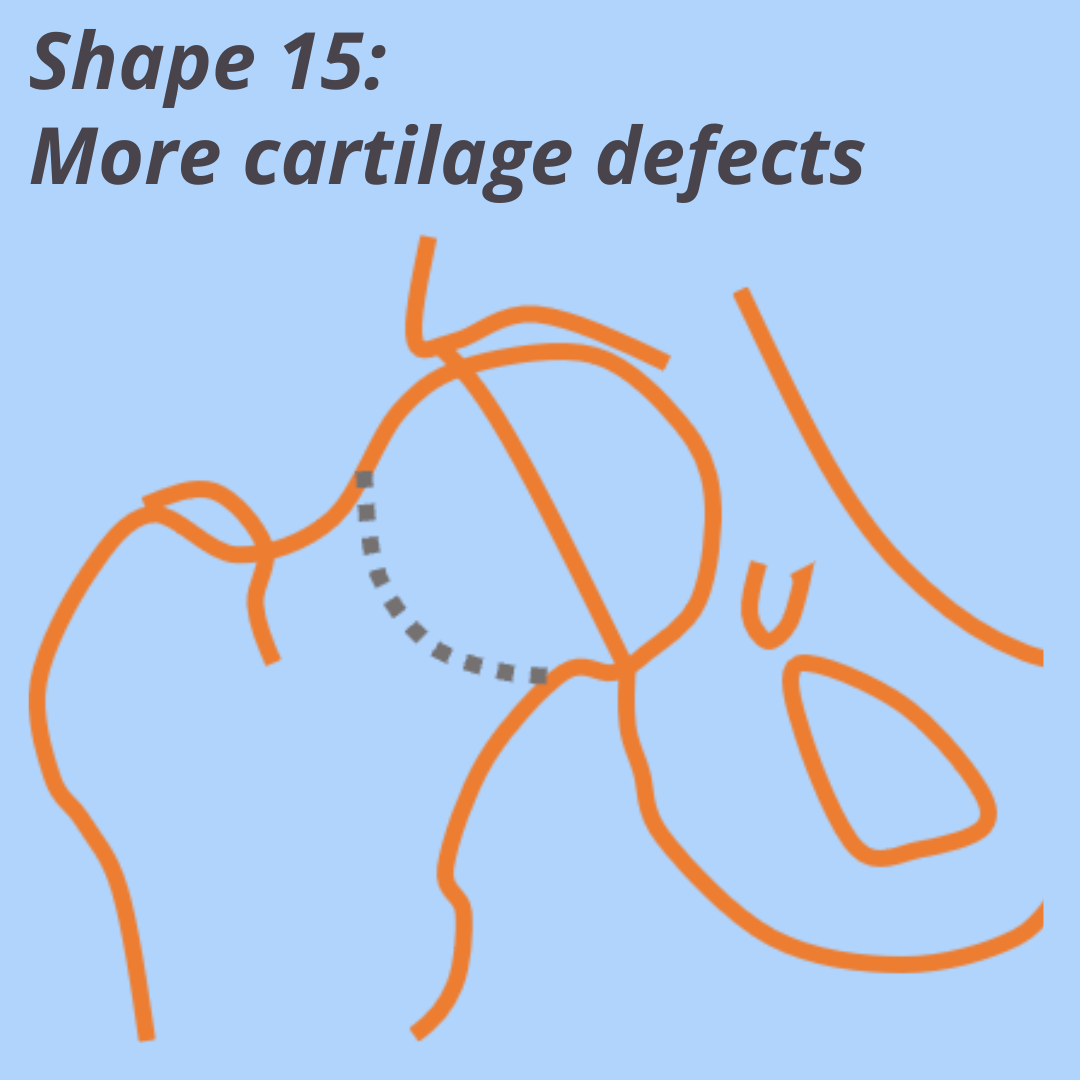
Shape 15: More cartilage defects
Shape features:
- cam morphology
- acetabular overcoverage
= mixed cam-pincer morphology
Clinical Implications:
- For males:
- 9/15 shape variations in males included cam morphology but only 2 of these were linked with higher odds of cartilage or labral defects.
- This may help explain why some with cam morphology go on to develop hip pathology and pain, while others don't.
- For females:
- Females had more spherical femoral heads and bone shape and hip osteoarthritis features were not associated in this cohort.
- Other factors may be more important in women, at least in young football players.
A combination of bony features rather than cam morphology alone, may predispose to pathology in males. Factors other than bone shape may be more important in development of hip joint pathology in female football players, but use of this technology in a wider female population would be of interest.
There is an established relationship between acetabular dysplasia and risk of hip osteoarthritis in females, but female football players are less likely to represent this population. A cohort of dancers or gymnasts might be useful to test from this perspective, although mobility status would need to be considered as a covariant. Hopefully we will see more use of this new technology in the future to further clarify the relationship between bone shape and hip osteoarthritis.
Another great Anterior Hip Pain blog
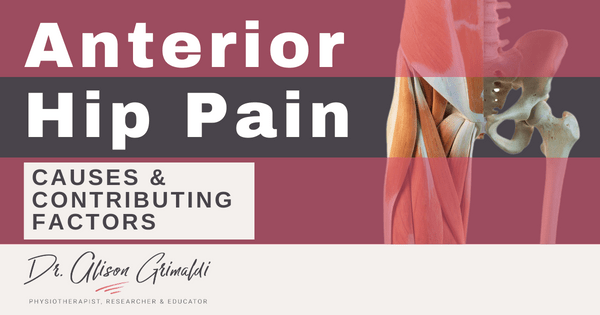
Anterior Hip Pain: Causes & Contributing Factors
Adequate consideration of individual causes and contributing factors is important for best outcomes.
Like to learn more about the influence of bone shape on hip joint health, and assessment and management strategies?
In this course, you can find detailed information on bone shape variations and how they impact on pathoaetiology, assessment and management of patients with hip pain. Take the online course or join me in a workshop for the practical aspects. In Hip Academy, you'll find additional downloadable pdf and video library resources that detail assessment of bone shape on imaging.
This online course is included in Hip Academy and Hip Academy members receive discounts for online workshops.
I hope you enjoyed the infographic and key learnings from Day 8 of my 12 Top Hip Papers of 2022. There are 4 more papers to come, so stay tuned and return to the blog page each day to see what other top papers and infographics I have for you!
If you missed yesterday's Hip Paper, click the link below to catch up!

